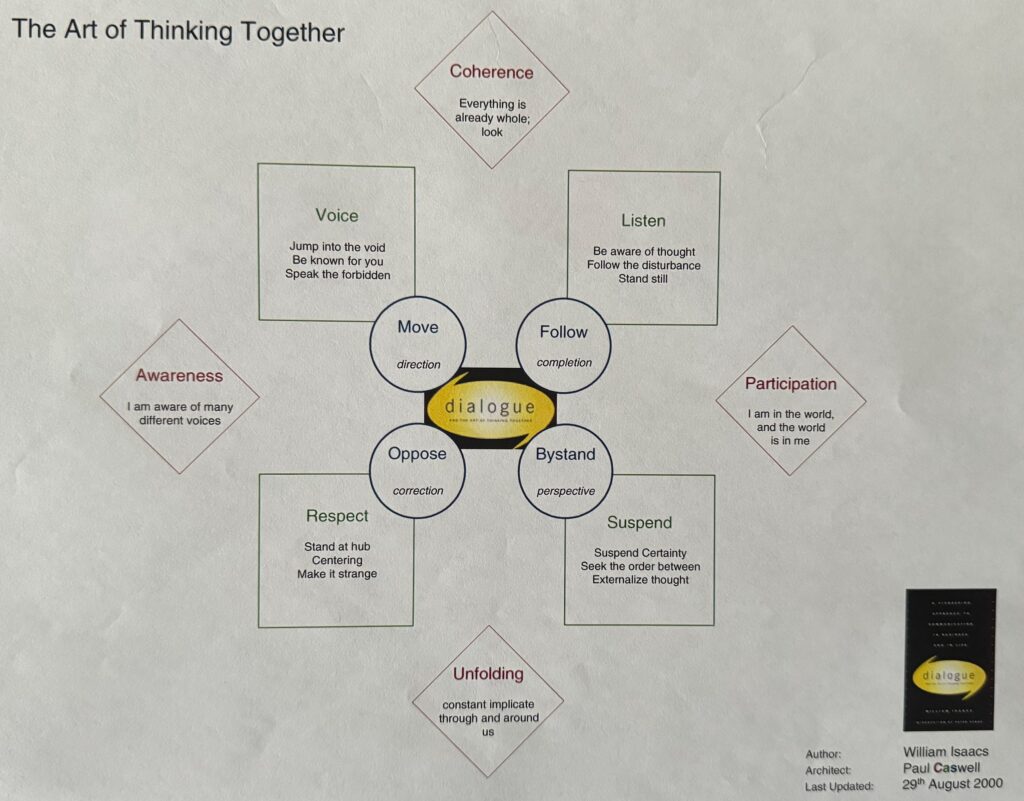Here are some of the images created as CAS ML was used in various technology product designs. During this phase of Paul’s career he was primarily working on the technology side but the core intent around clear communication and collaboration was leading up to his role as a Product Manager.
This page is not designed to share a linear story just to provide a glimpse into Paul’s passion for clarifying vision so that we can build something of value together as a team.
Introduction to Paul’s (aka Cas!) approach to architecture in the year 2000.
He taught all senior client partners, program managers and technology leaders this approach at Cambridge Technology Partners during onboarding as part of his role as Principal Architect.
This approach was also used extensively at Chase Bank while he was working as and Entrpise Architect and with consulting engagements with clients like Castrol, Bank of America, UBS Warberg and others
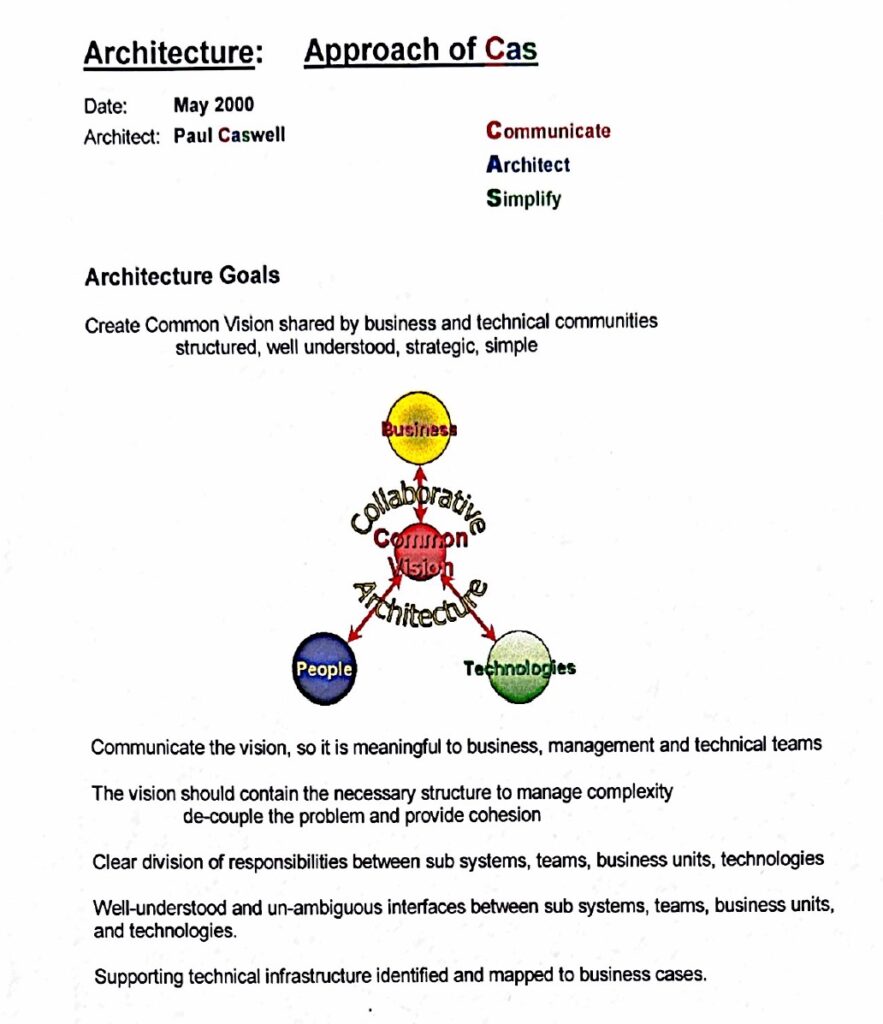
The following images were taken from various projects, they are not entire specifications just various perspective each one focused on communicating and clarifying an important aspect of the product. The use of colors and shapes help identify shared archetypes across multiple documents within an enterprise.
This generic business to business architecture model was often used early with large enterprise projects to help introduce some structure for mapping complex and distributed systems.
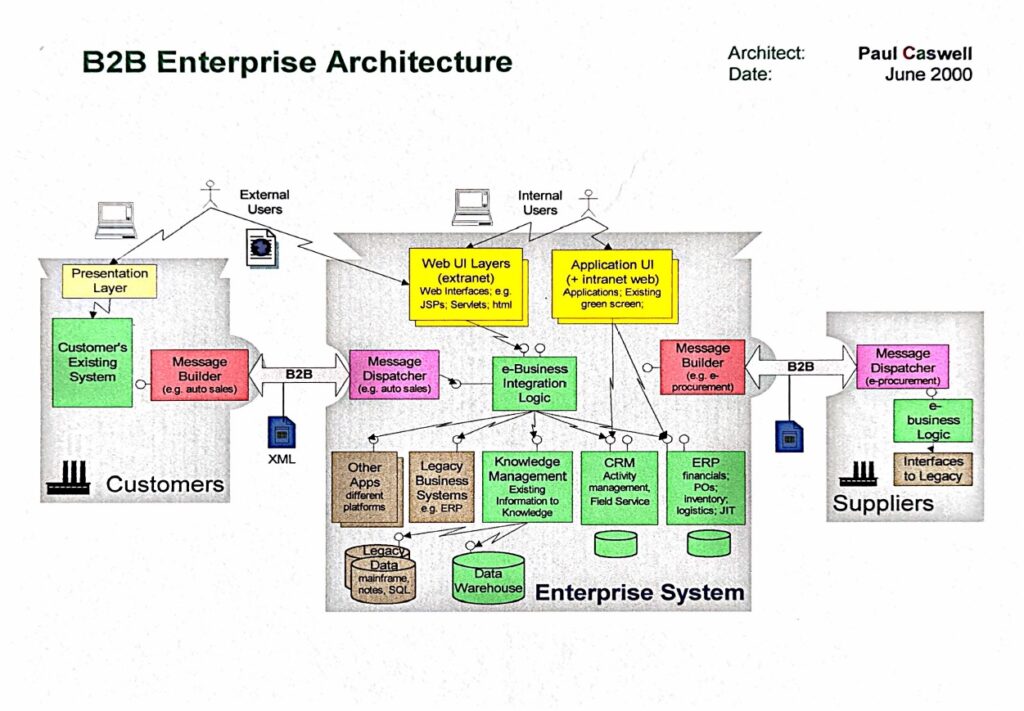
Here is a specific version with some minor alterations which helped a new client see how their existing investments (Siebel and JDEdwards in this case) could be part of a new integrated solution.
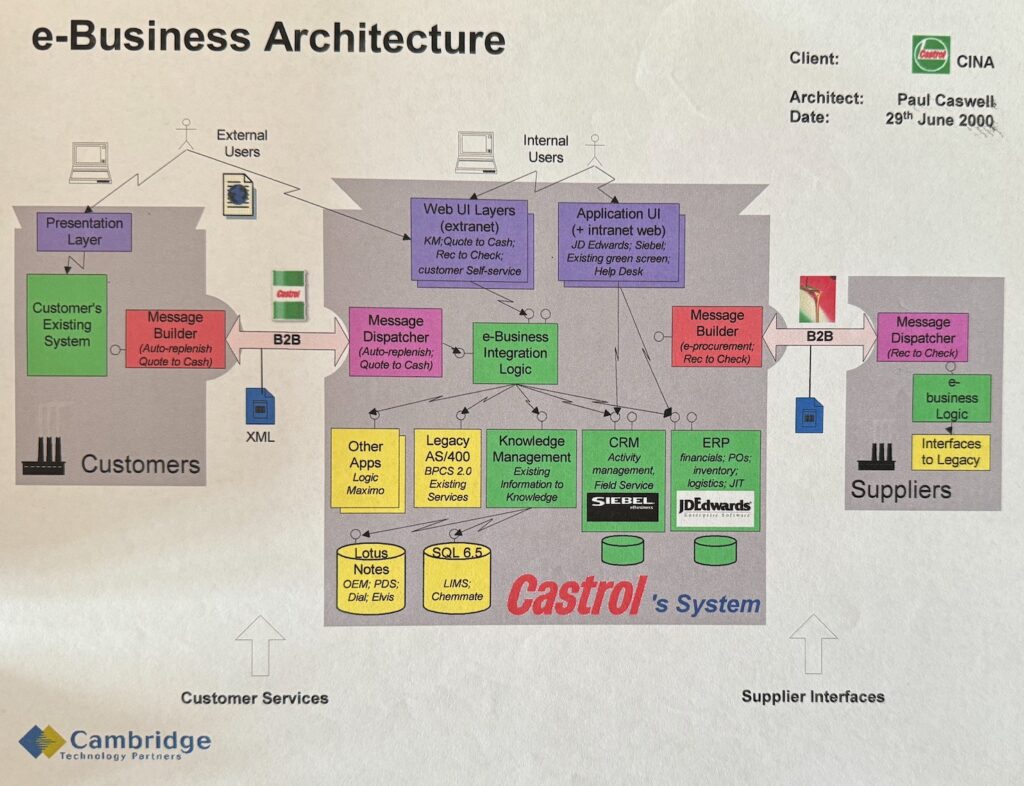
After this high level overview, a more specific initiative was explored and the image was expanded to show the next level of detail.
Note the colors connecting the two models: User interface application layer (purple). Shared resource domain logic / Enterprise logic (green). Legacy Systems and Data (yellow)
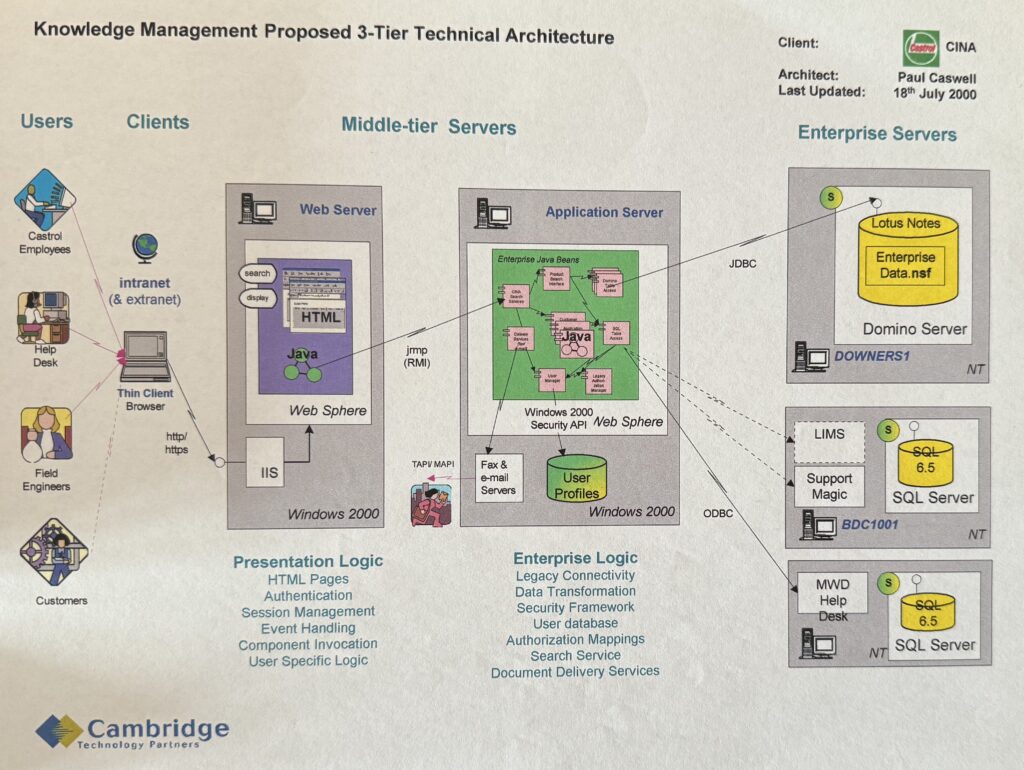
Two architecture from Bank One with very different purposes. This first one targeted at development teams to identify all external configuration and data dependencies.
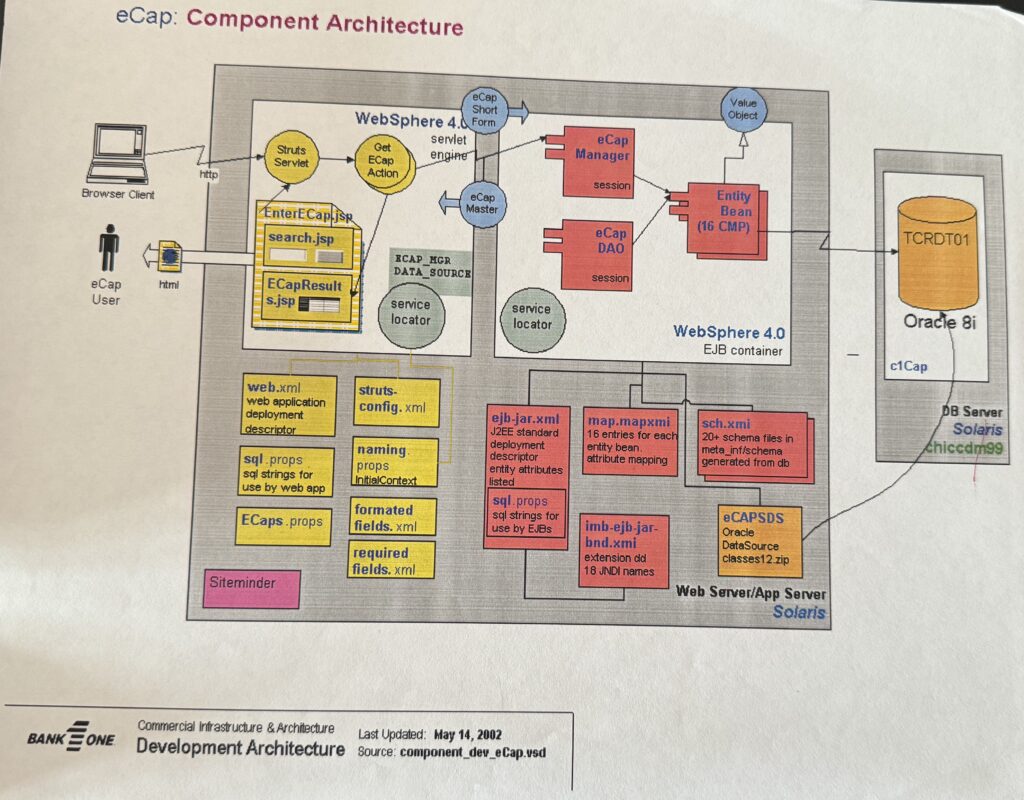
This second model was created for a different project. Here the purpose is to join the dots between a user story and the necessary data flows to execute the story.
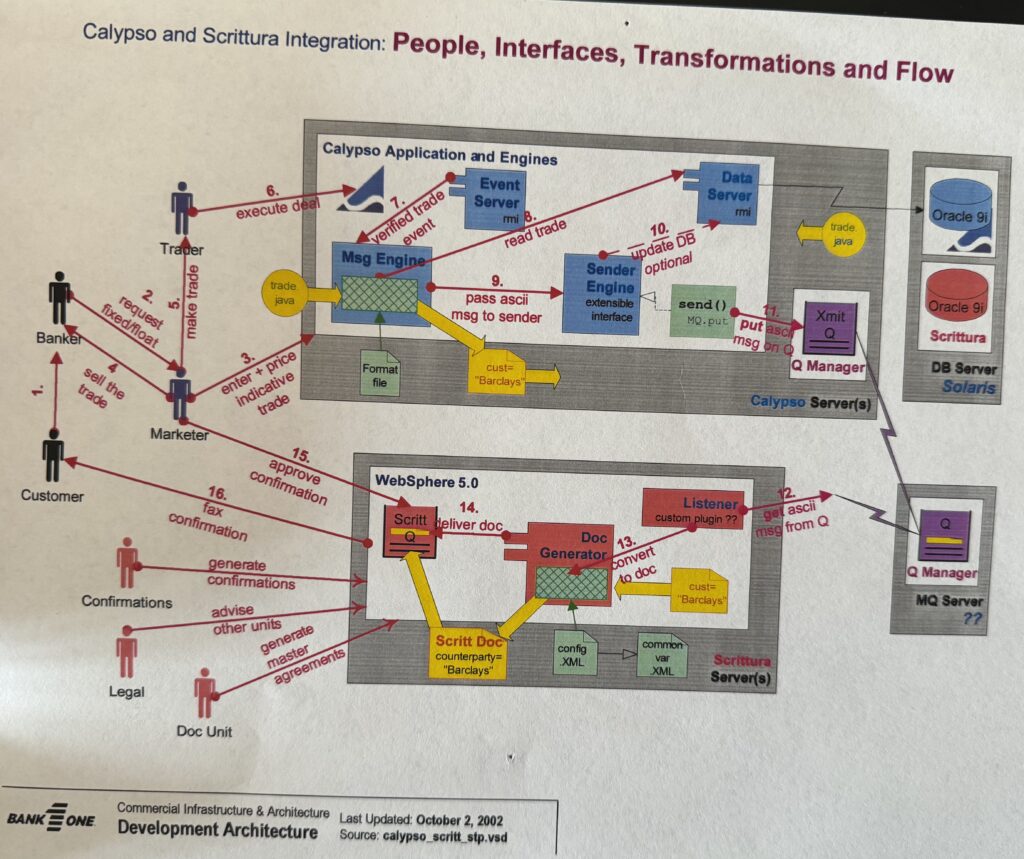
As Paul was forming this approach he was also studying communication techniques as well as architectural approaches.
This image come for a a book and a workshop he attended on the Art of Thinking Thinking together, taught by Bill Isaacs, a professor at MIT.
